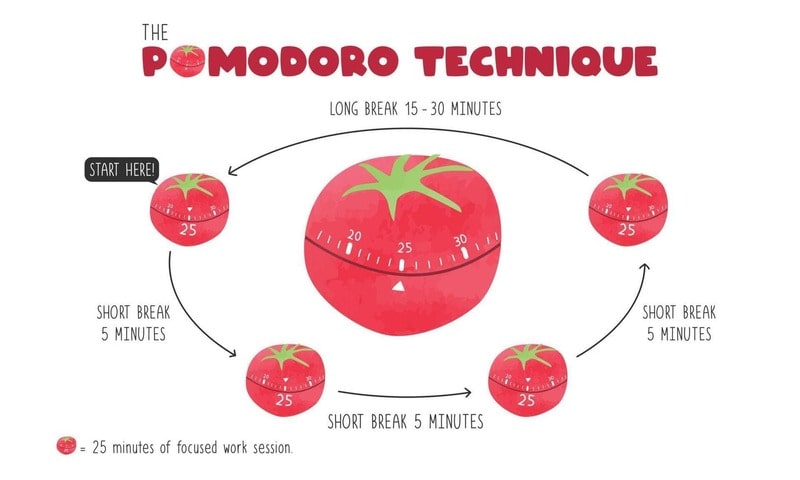Top Time Management Techniques Every Freelancer Must Know.

Have you ever felt like you’ve worked for hours but accomplished nothing by the end of the day? Or perhaps you’ve lost projects due to poor time management? These are familiar challenges for every freelancer. The world of freelancing, with all its freedom and opportunities, demands unparalleled discipline in managing time. Without a clear plan, the line between work and personal life blurs, and productivity plummets. In this article, we’ll explore practical time management techniques that not only boost your productivity but also pave the way for success in the freelancing world.
Table of Contents
- Why Is Time Management Crucial for Freelancers?
- Planning: The Foundation of Successful Time Management
- Practical Techniques for Boosting Daily Productivity
- Self-Care and Flexibility: Pillars of Long-Term Success
- Conclusion
Why Is Time Management Crucial for Freelancers?
Unlike traditional employees, freelancers have no boss overseeing them or fixed working hours. This freedom is both a blessing and a challenge. On one hand, you can set your own schedule, but on the other, it’s easy to fall into the trap of procrastination or overworking.
Freedom with Responsibility
One of the greatest appeals of freelancing is freedom of action. You choose which projects to take, which clients to work with, and what hours to dedicate to work. But this freedom comes with significant responsibility. Poor time management can lead to missed deadlines, dissatisfied clients, and ultimately, reduced income.
Avoiding Burnout
When work and life merge, the risk of burnout increases. Freelancers who don’t manage their time properly often work long hours, neglect sleep, and overlook their personal lives. In the long run, this harms both physical and mental health.
Boosting Income and Productivity
Time management isn’t about working more—it’s about working smarter. When you organize your time effectively, your productivity increases, allowing you to complete more projects in less time. This directly leads to higher income.
🔷 Click here to start "Time Management" training courses!
Planning: The Foundation of Successful Time Management
Without a clear plan, your time slips away easily. Planning not only helps you identify your tasks but also allows you to track your progress and make adjustments as needed.
To-Do Lists: From Mind to Paper
Creating a to-do list is the first step in planning. This list can include all your daily, weekly, or monthly tasks. The key is to get them out of your head and onto a visible medium. You can use a notebook, mobile apps, or project management software.
- Benefits:
- Clarifies tasks
- Reduces stress from forgetting tasks
- Enables prioritization
- Practical Tips:
- Don’t overcrowd the list.
- Break large tasks into smaller ones.
- Prepare the next day’s list at the end of each day.
Smart Task Prioritization
Not all tasks are equally important. Prioritization helps you focus on the most critical ones. There are several methods for prioritizing:
- Eisenhower Matrix: Divides tasks into four categories based on "importance" and "urgency":
- Important and Urgent: Do immediately.
- Important but Not Urgent: Schedule.
- Not Important but Urgent: Delegate (if possible).
- Not Important and Not Urgent: Eliminate.
- ABCDE Method: Assign each task a letter from A to E, with A being the most important and E the least.
Calendar and Weekly/Monthly Planning
For a broader view, use a calendar. Weekly or monthly planning lets you schedule projects, meetings, and even rest time in advance. This helps prevent wasted time and ensures you make the most of your capacity.
- Tools: Google Calendar, Outlook Calendar, Trello, Asana.
- Tip: Color-coding tasks by type (e.g., work, personal life, exercise) can be helpful.
🔷 If you’re interested in learning backed by a scientific approach, consider joining the “Science-Based Time Management & Productivity” course, a modern, evidence-based program perfect for those seeking proven methods.
🔷 To learn planning and project management techniques, visit the “Project Management” section.
Practical Techniques for Boosting Daily Productivity
Planning is useless without proper execution. Below are some practical techniques to help you stay focused and productive throughout the day.

Pomodoro Technique: Focus in Short Time Intervals
The Pomodoro Technique is one of the most popular time management methods. It involves breaking work into 25-minute focused intervals (Pomodoros) separated by short 5-minute breaks. After four Pomodoros, take a longer break (15–30 minutes).
- Benefits:
- Increases focus and prevents distractions
- Reduces mental fatigue
- Creates a sense of progress
- Practical Tips:
- Turn off all notifications during the 25-minute Pomodoro.
- Take real breaks—step away from screens.
- Adjust Pomodoro duration based on your focus (e.g., 30 or 45 minutes).
Time Blocking: Allocating Specific Times to Tasks
In the Time Blocking method, you dedicate specific portions of your day to particular tasks. For example, mornings for content creation, afternoons for emails and client management, and evenings for administrative tasks.
- Benefits:
- Enhances focus on one task at a time
- Reduces distractions and multitasking
- Creates routine and structure
- Practical Tips:
- Set realistic timeframes for blocks.
- Add blocks to your calendar.
- Include specific times for rest and leisure.
Combating Distractions: Creating a Focused Environment
One of the biggest enemies of freelancers is distraction. Social media, phone notifications, emails, and even background noise like the TV can disrupt your focus.
- Solutions:
- Dedicated Workspace: Set up a specific, quiet area for work.
- Do Not Disturb Mode: Turn off notifications on your phone and computer during work hours.
- Website Blockers: Use tools like StayFocusd or Freedom to block distracting websites.
- Headphones: Listening to calming music or white noise can aid focus.
🔷 Check out the comprehensive “Time Management Mastery: Do More, Stress Less” course, featuring exercises and practical tools for implementing Pomodoro, time blocking, and other techniques—highly recommended for everyone.
Self-Care and Flexibility: Pillars of Long-Term Success
Time management isn’t just about working—it’s about balancing work and personal life. A successful freelancer enjoys their work while prioritizing their well-being.
Setting Clear Boundaries: Work vs. Personal Life
One of the biggest challenges for freelancers is separating work from personal life. When your office is your home, these boundaries easily blur.
- Solutions:
- Fixed Work Hours: Set specific work hours and stick to them.
- Defined Workspace: Even a small corner of a room can be designated as your workspace.
- End-of-Day Ritual: Signal the end of your workday to yourself and those around you.
- Avoid Checking Emails During Rest Time: Refrain from checking work-related emails or messages during breaks.
The Importance of Rest and Leisure
Relentless work without breaks leads to exhaustion and reduced productivity. Rest and leisure are essential components of an effective time management plan.
- Short Breaks: Stand up, walk, or do stretching exercises every few hours.
- Longer Breaks: Plan weekly or monthly time off to recharge.
- Hobbies and Exercise: Engage in activities outside work that bring relaxation and joy.
Flexibility: Adapting to Change
The freelancing world is full of unexpected changes—projects may take longer, or clients may make sudden requests. Flexibility allows you to adapt to these changes and adjust your plan as needed.
- Buffer Time: Always include extra time in your schedule for unforeseen events.
- Weekly Review: At the end of each week, review your plan to see what worked and what needs improvement.
- Learn from Mistakes: Every unsuccessful plan is an opportunity to learn and improve.
Conclusion
Time management for freelancers is not just a skill—it’s a necessity for professional success and satisfaction. With careful planning, practical productivity techniques, and a focus on self-care, you can overcome the challenges of freelancing and reach your full potential. Remember, this is a journey, not a destination. Each day offers a new opportunity for improvement and adaptation. With consistent practice and commitment to time management principles, you’ll find that not only do your projects succeed, but you’ll also enjoy a calmer, more fulfilling personal life.
Now that you’re familiar with these techniques, it’s time to take the first step. Create today’s to-do list, plan for tomorrow, and take control of your time starting now. Success is within your reach.
Please Log in to leave a comment.